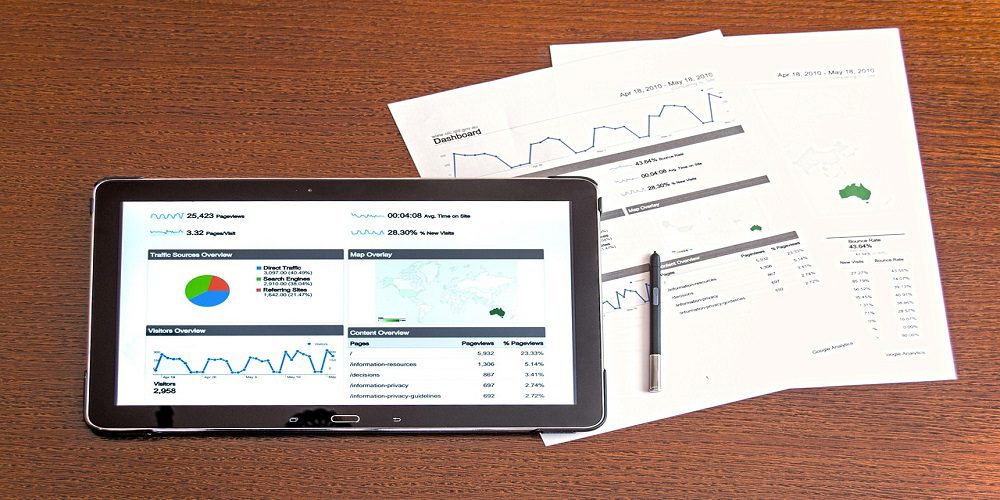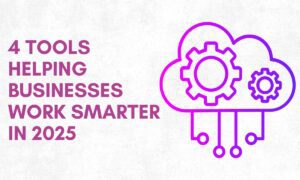Introduction:
In the rapidly evolving landscape of modern business, data has become the cornerstone of informed decision-making. To harness the potential within this data, businesses turn to advanced tools and technologies, and one such powerhouse is Business Analytics Tools. In this comprehensive guide, we will delve into the intricacies of what these tools entail, their significance, and how they empower organizations to drive success in today’s competitive market.
Understanding Business Analytics Tools:
Business analytics tools are a set of applications and technologies designed to analyze and interpret complex business data. These tools are instrumental in transforming raw data into actionable insights, helping organizations make informed decisions and gain a competitive edge. They encompass a wide range of functionalities, including data visualization, predictive analytics, and statistical analysis.
A. Types of Business Analytics Tools:
1. Descriptive Analytics:
Descriptive analytics focuses on summarizing historical data to provide a clear picture of what has happened in the past. Tools like Tableau and Power BI help in creating intuitive visualizations, dashboards, and reports, enabling stakeholders to understand and interpret data trends effectively.
2. Predictive Analytics:
Predictive analytics leverages statistical algorithms and machine learning techniques to forecast future trends and outcomes. Tools like IBM SPSS and RapidMiner help businesses make data-driven predictions, facilitating proactive decision-making.
3. Prescriptive Analytics:
Prescriptive analytics goes a step further, recommending actions based on predictive models. Tools such as SAS Advanced Analytics and FICO Decision Management Suite guide organizations in optimizing their decision-making processes.
Significance of Business Analytics Tools:
A. Informed Decision-Making:
I. Enhanced Data-Driven Decision-Making:
II. Business analytics tools enable organizations to move beyond gut feelings and make decisions based on solid data. III. This minimizes the risk associated with uncertainty, ensuring that every decision is well-informed and backed by insights derived from thorough analysis.
Real-time Decision Support:
With the capability to process and analyze data in real-time, these tools empower businesses to respond promptly to changing market conditions, emerging trends, and customer preferences. This agility is crucial for staying competitive in dynamic industries.
B. Improved Operational Efficiency:
Streamlined Processes:
Business analytics tools help streamline various business processes by identifying bottlenecks, optimizing workflows, and enhancing overall efficiency. This leads to cost savings and resource optimization, contributing to improved bottom-line results.
Resource Allocation:
Efficient resource allocation is critical for any business. These tools aid in identifying underutilized resources, optimizing staffing levels, and ensuring that every aspect of the organization operates at its peak performance.
C. Competitive Advantage:
Market Intelligence:
By analyzing market trends, customer behavior, and competitor activities, organizations gain valuable insights into their industry landscape. This knowledge equips them to make strategic decisions, launch targeted marketing campaigns, and stay ahead of the competition.
Customer-centric Approach:
Understanding customer preferences and behavior is paramount to business success. Business analytics tools help in creating detailed customer profiles, enabling personalized marketing strategies, improving customer satisfaction, and increasing customer loyalty.
Key Features of Business Analytics Tools:
A. Data Integration and Management:
Data Warehousing:
Business analytics tools often include robust data warehousing capabilities, allowing organizations to consolidate and manage large volumes of structured and unstructured data from various sources.
ETL Processes:
Extract, Transform, and Load (ETL) processes are integral to these tools, ensuring that data is cleansed, transformed, and loaded into the analytics environment efficiently.
B. Advanced Analytics Capabilities:
Machine Learning:
Many business analytics tools incorporate machine learning algorithms to identify patterns, make predictions, and automate decision-making processes.
Statistical Analysis:
The inclusion of statistical analysis tools facilitates a deeper understanding of data patterns, relationships, and correlations.
C. Data Visualization:
Dashboards:
Intuitive dashboards provide a visual representation of key performance indicators (KPIs) and metrics, making it easier for stakeholders to comprehend complex data sets.
Interactive Reports:
Tools like Microsoft Power BI and Tableau offer interactive reporting features, allowing users to explore data and gain insights through dynamic visualizations.
Challenges and Considerations:
A. Data Security and Privacy:
Regulatory Compliance:
Businesses must adhere to various data protection regulations, such as GDPR and HIPAA. Business analytics tools need robust security features to ensure compliance and safeguard sensitive information.
Data Governance:
Establishing clear data governance policies is essential to maintaining data quality, integrity, and security throughout the analytics process.
B. Scalability:
Growing Data Volumes:
As organizations accumulate more data, scalability becomes a concern. Business analytics tools should be able to handle increasing data volumes without sacrificing performance.
Integration with Existing Systems:
Seamless integration with existing systems and technologies is crucial to ensuring a smooth analytics workflow and preventing data silos.
C. User Adoption and Training:
User-Friendly Interface:
The success of business analytics tools depends on user adoption. A user-friendly interface and intuitive features contribute to a positive user experience.
Training and support:
Comprehensive training programs and ongoing support are essential to empower users and maximize the potential of these tools.
Future Trends in Business Analytics Tools:
A. Augmented Analytics:
Integration of Artificial Intelligence:
The future of business analytics tools lies in the integration of artificial intelligence (AI) to enhance analytics capabilities, automate processes, and provide more accurate insights.
Natural Language Processing:
Tools incorporating natural language processing (NLP) enable users to interact with data using conversational language, making analytics accessible to a broader audience.
B. Cloud-Based Analytics:
Scalability and Flexibility:
Cloud-based analytics solutions offer scalability and flexibility, allowing businesses to adapt to changing data requirements and scale their analytics capabilities as needed.
Collaboration and accessibility:
Cloud-based analytics facilitate collaboration among geographically dispersed teams, providing seamless access to data and insights from anywhere with an internet connection.
Conclusion:
Business analytics tools have emerged as indispensable assets for businesses seeking to thrive in the data-driven era. From descriptive analytics for understanding historical trends to predictive analytics for forecasting the future, these tools empower organizations to make informed decisions, streamline operations, and gain a competitive advantage. As the landscape of business analytics continues to evolve, staying abreast of emerging trends and overcoming challenges will be key to unlocking the full potential of these transformative tools. Whether you are a small startup or a large enterprise, embracing business analytics tools is not just a choice; it’s a strategic imperative for sustained success in the dynamic and competitive business environment.



































